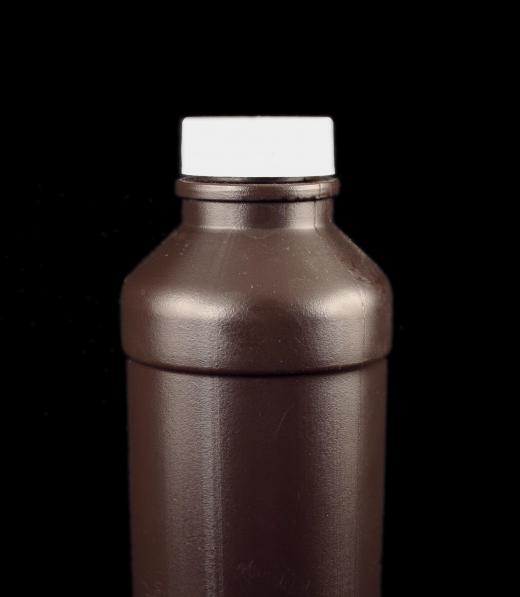What Is the Connection between Sulfuric Acid and Hydrogen Peroxide?
Sulfuric acid and hydrogen peroxide are among the most widely used chemicals, both industrially and in the laboratory. They are connected in several ways. Two methods of manufacture of hydrogen peroxide involve the use of sulfuric acid, although these have been largely superseded. Several well-known laboratory experiments and demonstrations that are part of many school curricula require these two compounds. In addition, mixing sulfuric acid and hydrogen peroxide produces a highly corrosive solution with a variety of uses in the semiconductor, paper and mining industries.
Hydrogen peroxide was originally produced by acidifying barium peroxide with hydrochloric acid. Barium chloride, which is also formed by this reaction, was removed by adding sulfuric acid; they react to produce an insoluble precipitate of barium sulfate. A subsequent method involved the hydrolysis of peroxydisulfuric acid, produced by the electrolysis of sulfuric acid. Today, however, almost all hydrogen peroxide is made by the anthraquinone process, a more economical procedure that does not involve sulfuric acid.

The reaction of sulfuric acid and hydrogen peroxide produces an aqueous solution of peroxymonosulfuric acid (H2SO5): H2SO4 + H2O2 → H2SO5 + H2O. This is also known as “piranha solution” due to its corrosiveness: it rapidly destroys most organic materials. Another name for it is Caro’s acid, after the German chemist Heinrich Caro, who first produced the acid. Pure peroxymonosulfuric acid — a crystalline solid at room temperature — is prepared by a different method, but the acid is generally used as an aqueous solution. Piranha solution is usually prepared from concentrated sulfuric acid and 30% hydrogen peroxide; the proportions can vary depending on use, but a 3:1 ratio of sulfuric acid to hydrogen peroxide is a common formulation.

This acid has a number of uses, but must be prepared and handled very carefully. It is a powerful oxidizing agent and is particularly useful for removing organic residues. For this reason, it is sometimes used for cleaning glassware and other laboratory equipment. Caro’s acid is also widely used in the semiconductor industry as an etchant and for ensuring that silicon wafers and other delicate electronic components are free from organic contaminants. Other uses are in the mining industry — for separating metals and ores and decomposing toxic cyanide compounds from wastewater — and in the paper industry — for the delignification and bleaching of wood pulp.
Sulfuric acid can be produced by the reaction of hydrogen peroxide and sulfur dioxide: H2O2 + SO2 → H2SO4. This method is not used commercially; however, the reaction can take place in the atmosphere — where both sulfuric acid and hydrogen peroxide are found in small amounts — contributing to acid rain. Hydrogen peroxide can form naturally through photochemical reactions. Sulfur dioxide is produced by the burning of sulfur-containing fossil fuels and naturally by volcanic activity. Although hydrogen peroxide is not required for the formation of acid rain from sulfur dioxide, the peroxide reaction is much faster.
AS FEATURED ON:
AS FEATURED ON:












Discuss this Article
Post your comments